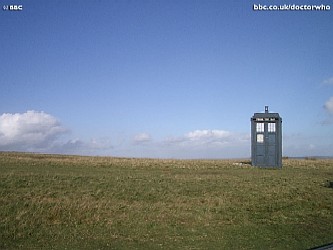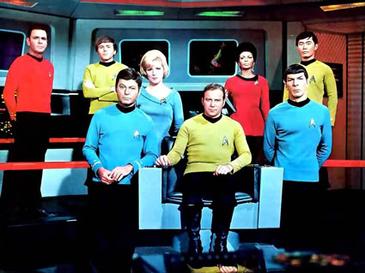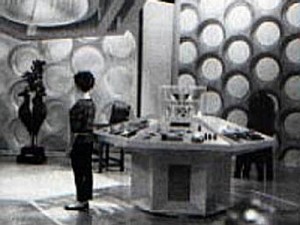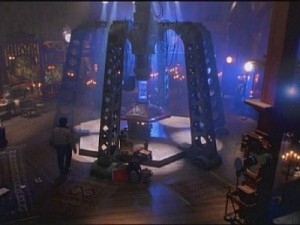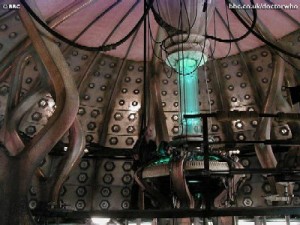It is said, Indians are blind to the “bitter truth” in Kashmir.
It has been alleged
by some students of an Indian University
(described as “a group of ‘adventure junkies,’
who traveled across Kashmir and interacted with students and people”.)
that almost all Indians are casually ignorant about the Kashmir conflict
and about the realities of issuess of violations of the Human Rights in Kashmir.
This has been picked up and utilised by propagandists who claims
Indian media is biased and has been persistently “feeding lies” to the Indian public.
In my earlier articles I have been exploring the myths of the situation
and have been trying to bring out the truth and nothing but the whole truth.
I am not surprised at the response of some, who I believe are from the group of students.
These comments are on the blog – kashmir myths – indians in illusion,
comment 3 by Karan Pradhan, and
comments 4 and 7 by Riya Kartha.
I was told that
There are more important things than researching about facts and figures and conducting interviews with different people. When you feel as strongly as some of us felt on that trip to Kashmir, you will realize that feeling is what matters more.
I do not agree,
on issues of importance of such severe magnitude,
where thousands have been killed, or raped or ethnically cleansed,
I cannot let emotions cloud my judgement.
So, to avoid being accused of misconstruing and or misrepresenting,
I copy and paste the entire chapter (IV) on Kashmir,
from this report released by the Human Rights Watch in 1994
and covers the period from 1989, the year from which the militancy escalated.
For those who are interested,
I would request you to read the whole report
or atleast the Chapter II Sources of Weapons for Militias in Punjab and Kashmir
as background information to the article below.
I give you the “bitter truth” about Kashmir.
India: Arms and Abuses in Indian Punjab and Kashmir
September 1994, Vol. 6, No. 10
CHAPTER IV: Arms and Abuses in Kashmir
Abuses by Indian Government Forces(154)
Throughout the conflict, Indian security forces–particularly the Army, the Central Reserve Police Force (crpf) and the Border Security Force (bsf) – have committed regular and deliberate violations of human rights and humanitarian laws in Kashmir. It is clear that in recent months, the level of abuses by Indian government forces has risen significantly, with large numbers of summary executions of suspected militants and increased killings of civilians in reprisal attacks.
In addition to summary executions and reprisal killings of civilians, abuses by Indian forces include disappearances, unprovoked shootings of unarmed noncombatants, rape, and other attacks on civilians and captured combatants. Legislation authorizing the security forces to shoot to kill and protecting them from prosecution has facilitated such abuses. The security forces have also engaged in wanton destruction and looting of civilian property, and have burned down residential neighborhoods in retaliation for militant attacks.
Government forces have also systematically violated international law by using lethal force against peaceful demonstrators, and engaging in widespread and arbitrary arrests of persons suspected of sympathizing with the militants, and detaining them for extended periods without charge or trial. Torture of detainees is widespread, and includes methods such as prolonged beatings, electric shock, and sexual abuse.
The incidence of rape is also high. Women are often raped in the course of house searches by the security forces, and in retaliation for militant attacks on government patrols.
In complete violation of international law, Indian forces often go on rampages in civilian areas after militant attacks. These rampages commonly include arbitrary beatings and shootings of civilians, sacking of their houses, rape, and arson. In a January 1993 incident, Indian police admitted that paramilitary security forces killed at least forty-three civilians, wounded more than a dozen others, and torched scores of buildings in Sopore in revenge for an attack by armed members of Hezb-ul Mujahidin.(155) The severity of these attacks and their regularity have not only traumatized the local population, but have also alienated the local police forces. The torture and death in custody of a constable sparked a local police revolt in May 1993.
The government’s efforts to justify these abuses as legitimate responses to militant action completely fly in the face of international law.
Abuses by Militants
Members of militant organizations have committed grave violations of humanitarian laws. Several major militant groups operate in Kashmir, and perhaps dozens of smaller ones, some supporting independence and others accession to Pakistan.(156)
The most prominent are the JKLF, a pro-independence group which is the oldest and reportedly one of the most popular organizations, and the Hezb-ul Mujahidin, which supports confederation with Pakistan, and is reportedly the best armed. Another insurgent group which supports independence is the Jammu and Kashmir Student Liberation Front.
Numerous new militant organizations have emerged in recent years, many of which support accession to Pakistan. In addition to Hezb-ul-Mujahadin, pro-Pakistani groups include the Islami-Jamiat-Tulba and the Muslim Students Federation, all of which are affiliated with the Jamaat-e-Islami political party.
Other pro-Pakistan militant organizations include the Hezb-e Ullah, the Hezb-e-Islami, the Muslim Janabaz Force, the Al Umar Mujahidin, Operation Balakote, the Tehreik-e-Jehadi-Islami, the Islamic Tehrik-e-Tulba, the Allah Tigers, the Zia Tiger Force, the Islamic Students’ League, and the Jammu and Kashmir People’s League, Al-Jehad, Al-Barq, Hizbollah, Ikhwan-ul-Muslimin, Jamait-ul Mujahidin, Al-Umar Mujahidin, Tekriqu-ul Mujahidin, Allah Tigers, Ul-Umar Commandos, and the Harakatul Ansar.
Although all the militant groups are violent in their drive for independence from India, and some periodically work in coalition,(157) most of the groups do not necessarily coordinate actions or support one another’s tactics.
None of the groups, individually or collectively, control territory in Kashmir, although certain areas in the Kashmir valley are reputed to be strongholds of particular groups, especially certain towns along the border with Pakistan, some of which are along supply routes for weapons brought in from Pakistan.
Militant military operations are generally characterized by ambushes of government forces and hit-and-run attacks for which they rely on weapons such as AK47s, grenades, landmines, rockets, and other light weapons and small arms. Acquisition of unprecedented levels of firepower has not only helped militants achieve greater military successes, but has also contributed to the proliferation of lethal attacks by militants on civilians since 1989.
Violations of humanitarian law committed by militants include: execution-style killings of civil servants, notably Muslim political leaders associated with the National Conference party, which is allied with New Delhi, prominent Hindus, and civilians suspected of being government informers; attacks in which militants fail to distinguish between military targets and civilians; rape; threatening and attacking members of the minority Hindu community; violations of medical neutrality; and the use of religious sites for military purposes.
Targeted Killings of Civilians: Militant organizations operating in Kashmir have repeatedly violated international prohibitions against the murder of individuals taking no part in armed hostilities.(158) They have killed prominent members of the National Conference party, leading members of the Hindu community and persons suspected of collaborating with the Indian government.
The following accounts typify the kinds of targeted murders of civilians carried out by militants in Kashmir.
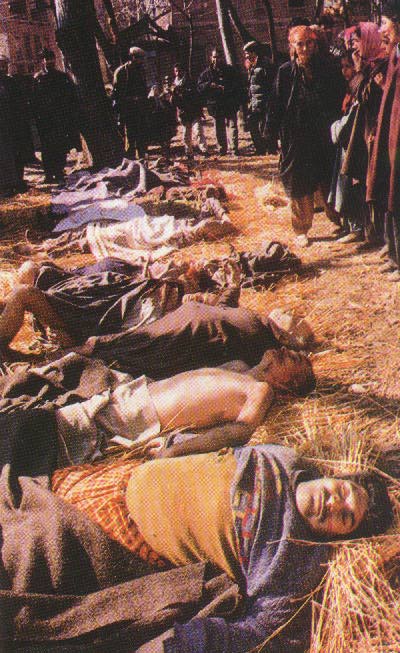
On March 2, 1993, Ghulam Nabi Baba, a retired assistant commissioner, was shot dead after being abducted by militants on February 28. Ghulam Nabi Baba was a relative of the state Congress-I party leader, Ghulam Rasul Kar. On March 1, Ghulam Rasul Kar’s brother-in-law, Habibullah Mirshah, was also killed by militants.(159)
On November 7, 1992, militants hurled a grenade into Shaheedi Chowk, Srinagar, killing a shopkeeper, Rajesh Jain, and causing minor injuries to Hamidullah Khan, an advisor to the state governor. Khan was believed to have been the target of the attack.(160)
Photograph: Wandhama massacre
On December 13, 1990, Hezb-e Ullah militants gunned down Maulana Mohammad Sayeed Masoodi, the former general secretary of the National Conference party and a leading moderate politician in Kashmir. According to a public statement issued by Hezb-e Ullah, Masoodi was killed for his involvement with the National Conference and for supporting Kashmir’s union with India.(161)
After being threatened with death on several occasions if he did not leave the Kashmir valley, Gopi Nath Raina, the co-director of the textiles department of the Jammu and Kashmir government, was shot dead by members of the jkslf using automatic rifles on June 26, 1990.(162)
In April 1990, jkslf militants murdered Mushir-ul Haq, the vice chancellor of Kashmir University in Srinagar, and his personal secretary Abdul Ghani. Haq was apparently well-known as a proponent of progressive Muslim views. The two were kidnapped by armed agents of the jklf and Hezb-ul Mujahidin immediately prior to a scheduled meeting between Haq and the state Governor Jagmohan, who had been appointed by the central Indian government. Militants demanded a three-hour relaxation of the curfew which had been in force around-the-clock, and the release of three detainees in government custody. Haq and Ghani were found shot to death several days later.(163)
Lassa Koul, the director of the state-run television station for Jammu and Kashmir, was shot dead by jklf gunmen on February 13, 1990, apparently as part of an attempt to obtain programming more favorable to the militants. Koul received numerous threats prior to his death from both the jklf and Hezb-ul Mujahidin, as well as from other militant groups. His murder prompted other newscasters to begin accommodating their programs to the militants’ demands out of fear of similar attacks.(164)
Extrajudicial Punishment
Militant organizations have ordered summary punishment, including execution, of individuals believed to be government operatives and informers. The following two accounts are typical:
In March 1990, the Hezb-ul Mujahidin militant group shot to death two Muslim religious leaders near Shopian, south of Srinagar, reportedly claiming that they had been tried and executed under Islamic law for spying for an intelligence agency.(165)
A group of armed militants belonging to the Hezb-ul Mujahidin kidnapped Mir Ghulam Mustafa, a former member of the dissolved Kashmir state legislative assembly, who had helped arrange the release of the kidnapped daughter of Home Minister Mufti Mohammed Sayeed in December 1989. He was hung after Hezb-ul Mujahidin pronounced him guilty of “indulging in anti-Islamic activities and spying for Indian government intelligence.”(166)
Militants have also executed captured government security force personnel. In 1993, a spokesman for the groups claimed that this policy was adopted because the Indian government summarily executed captured militants.(167)
Attacks on Civilian Government Targets
While militants in Kashmir tend to avoid the kind of random shootings at crowds of civilians or passenger vehicles that have characterized Sikh militant tactics, they have engaged in attacks on government targets that are not military in nature. In particular, militants have launched bomb and grenade attacks on government buildings and transport vehicles. Such attacks violate humanitarian law if the buildings and vehicles are not being used in ways that contribute significantly to the war effort.(168) The following accounts are representative:
Hezb-ul Mujahadin claimed responsibility for a May 11, 1993 attack on the government secretariat, which houses the offices of the civil administration in Srinagar. Rocket-propelled grenade launchers were used. One employee reportedly was killed and three injured during the attack.(169)
On October 17, 1992, a car bomb planted by militants of the Hezb-ul Mujahidin exploded outside the State Bank of India on Residency Road in Srinagar, a popular shopping and business district. Asia Watch interviewed witnesses who reported that at least two civilians were killed and others injured; several members of the Indo-Tibetan Police, on guard outside the bank, were also injured.(170)
Al Jihad Mujahidin took responsibility for the December 8, 1990 explosions in the office of the chief of agricultural reforms of the state government, which caused extensive damage. Offices of the state civil administration have been a frequent target of attack.(171)
On November 16, 1989, at least twenty-four persons were injured when a bomb planted inside a government passenger bus exploded south of Srinagar. The jklf claimed responsibility for the incident. The same afternoon, the jklf set off a bomb which caused extensive damage to a building in Srinagar which housed the office of a division of the public works department. The local press reported that a caller explained that the explosions were designed to reinforce the militants’ call to boycott the fall 1989 elections to the lower house of the Indian Parliament.(172)
Rape(173)
Rape by members of militant organizations was rare in the conflict’s early years, although threats and attacks against women by groups seeking to enforce their interpretation of Islamic culture were not uncommon. Since 1991, however, rape has been committed with increasing frequency by members of certain militant organizations.
In some cases, women have been raped and then killed after being kidnapped by rival militant groups and held as hostages. In other cases, members of armed militant groups have abducted women after threatening to shoot the rest of the family unless the woman was handed over to a particular militant leader. Some incidents of rape by militants appear to have been intended as punishment because the victims or their families were believed to be government informers, opposed to the militants, or supporters of rival groups.
Asia Watch and Physicians for Human Rights reported that one of the earliest rape cases involved a staff nurse kidnapped from the Saura Medical Institute on April 14, 1990. Her body was found with a note nearby stating that the jklf took responsibility for the killing and accused the victim of informing the security forces about the presence of a number of wounded militants in the hospital. A post-mortem report concluded that she had been raped before being shot dead.(174)
Kidnapping
The December 1989 kidnapping by the jklf of Dr. Rubia Mufti, the daughter of the Union home minister Mufti Mohammed Sayeed, is often seen as marking the beginning of increased militant activity in Kashmir. In exchange for her freedom, the jklf demanded the release of five of their colleagues from detention. She was freed several days after the abduction, following the government’s compliance with the jklf demand. Since then, members of various militant organizations have engaged in kidnapping as a way to pressure the government to release militant detainees or make other changes. The following are examples of kidnappings:
On March 31, 1991, the Moslem Janbaz Force abducted two Swedish engineers employed at a hydroelectric project in Kashmir, and threatened to kill them if the government did not permit Amnesty International and the United Nations to investigate human rights abuses in Kashmir. They managed to escape after several months.(175)
On June 8, 1993, militants kidnapped Sharifuddin Shariq, a well-known National Conference leader and former member of the state assembly. Shariq reportedly was considered to have close ties with former Chief Minister Farooq Abdullah.(176)
On June 6, 1994, the Harakatul Ansar militant group kidnapped two British tourists, aged 16 and 36, who were on holiday near Pahalgam. Motive for the kidnapping was unclear. An initial Ansar statement indicated the hostages would be released in exchange for three jailed militants, a subsequent statement said they were being held only to highlight human rights abuse in Kashmir by Indian troops, while a third said they strayed too near a militant camp. The two were released unharmed on June 23, 1994.(177)
Inducing Terror in the Civilian Population
International law prohibits not only acts, but also “threats of violence, the primary purpose of which is to spread terror among the civilian population.”(178) In contravention of this rule, some militant groups have employed threats to compel suspected opponents, government informers, and others to leave the Kashmir valley, or to conform their behavior to desired Islamic standards. A jklf statement in June 1990, for example, claimed responsibility for bombings in the town of Pulwama, and warned that “all Indian agents and spies” should recant or risk being killed. In November 1989, a number of militant groups issued threats against liquor store owners that those who did not shut down their businesses would have to “face the consequences.”(179) A March 26, 1991 statement issued by Hezb-ul Mujahidin warned that action would be taken against women who failed to cover their faces and bodies.(180)
Many Hindus have also been made the targets of militant threats, especially in 1989-1990, and these threats combined with acts of violence and harassment by militants against the Hindu population, caused many to flee.(181) For example, in March 1990, the jkslf issued a statement warning all non-Kashmiri traders and officials living in the valley “after acquiring citizenship rights through false declaration” to leave by the end of the month. The statement also announced that those who did not leave would be targeted for attack. Hezb-ul Mujahidin issued a directive the same month in Srinagar, ordering non-Kashmiris working as civil servants for various branches of the Indian government to leave by month’s end, or face death.(182) A 1992 press report noted that, when one militant group, the Ikhwan-ul Muslimin, broadcast an appeal urging Hindus to return, Al-Umar and Al-Jehad issued press releases warning them not to come back.(183)
Militant groups have also issued threats to journalists whom they believe publish reports biased against the militant cause. They have imposed bans on particular newspapers and enforce those bans through the abduction of distributors and other attacks.(184)
Violations of Medical Neutrality
Doctors in Kashmir claim that militants abduct medical workers to force them to provide treatment to injured militants. Militants have also reportedly abducted patients from hospitals. Asia Watch and Physicians for Human Rights interviewed a doctor in October 1992 who described the sense of fear pervading the hospital where he worked: “I can’t even ask the floor sweeper to do his job because you never know who’s carrying a gun or who someone may be.”(185)
Use of Religious Sites as Military Strongholds
Press accounts described the October 1993 occupation of the Hazratbal Mosque on the shore of Dal Lake in Srinagar. The mosque is held sacred by Kashmir’s Muslim population because it enshrines a hair of the Prophet Mohammed. According to a number of reports, the mosque was taken over by militants armed with sophisticated weapons. Religious pilgrims were said to be inside at the time of the take-over, but none were killed.(186) These reports suggest that militants violated the international proscription against the use of religious sites as military strongholds. (187)
Role of Weapons in Abuses by Militants
Militant forces in Kashmir have engaged in the commission of serious abuses of humanitarian law since at least 1989. Easy access by militants to large caches of more advanced weapons–made possible by the proliferation of small arms and light weapons throughout the region during the 1980s–has contributed to the deterioration of the human rights situation in Kashmir.
More sophisticated weapons such as automatic rifles, rockets, and grenades have been used in direct attacks on civilians and civilian property, although they have not been used by Kashmiri militants to commit human rights abuses with the same frequency that they were used by Sikh militants in Punjab. These weapons have also enhanced the ability of the militants to induce fear in the civilian population; threats of force backed up by a vast arsenal of weapons have contributed to the flight of many civilians from Kashmir.
In light of this record of abuse, the Arms Project believes that any future supplies of weapons to Kashmiri militants should be tied to respect for humanitarian law and human rights.(188)
 history
history Kashmir
Kashmir India
India insurgency
insurgency human rights
human rights propaganda
propaganda
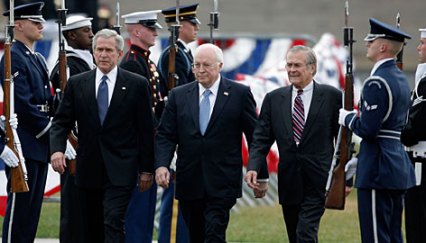
![]() America
America![]() Pakistan
Pakistan![]() Islamic Bomb
Islamic Bomb![]() terrorism
terrorism![]() WMDs
WMDs![]() nuclear war
nuclear war







